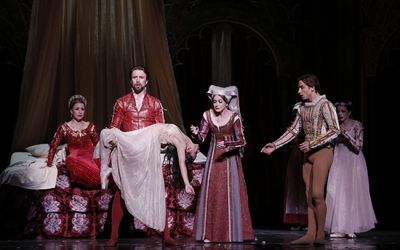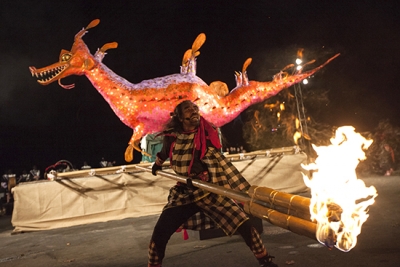Arts
Film | Theatre | Art | Opera | Music | Television | Festivals
Welcome to ABR Arts, home to some of Australia's best arts journalism. We review film, theatre, opera, music, television, art exhibitions – and more. To read ABR Arts articles in full, subscribe to ABR or take out an ABR Arts subscription. Both packages give full access to our arts reviews the moment they are published online and to our extensive arts archive.
Meanwhile, the ABR Arts e-newsletter, published every second Tuesday, will keep you up-to-date as to our recent arts reviews.
Recent reviews
Mona Brand Award, Natasha Bieniek: Archibald Prize 2016 finalist, Berlin Philharmonic Orchestra Academy, Three Stravinsky ballets by David Robertson, Frida Kahlo and Diego Rivera giveaway ...
... (read more)To open its Melbourne winter season, The Australian Ballet has invited the handsome and talented Houston Ballet to make its Australian début in Romeo and Juliet by Houston's Australian artistic director, Stanton Welch. After reaching leading soloist and resident choreographer status in ...
... (read more)Afilm sequel is always a risky venture, and thus it is with Goldstone, Ivan Sen's follow-up to his 2013 outback crime drama, Mystery Road. But it is just one risk the writer–director–cinematographer director takes with this film. Goldstone re-introduces us to the indigenous police detective ...
... (read more)French writer-director Stéphane Brizé's The Measure of a Man (La loi du marché), looks at first to be a character study with a quasi-documentary feel, then takes a disconcerting turn. At its centre is Vincent Lindon (Welcome [2009], Mademoiselle Chambon [2009]), a robust, often demonstrative actor ...
... (read more)ANAM and BPO, The other American songbook, Helpmann Awards, Cut The Sky, and subscriber giveaways: Degas and Our Kind of Traitor ...
... (read more)The streets of Hobart are especially cold and quiet on the longest night of the year. Those out and about are simply commuting from place to place, wrapped in scarves, hats, and jackets. Some head towards St David's Cathedral to attend Heart of Darkness, the penultimate performance of ...
... (read more)At the end of Richard Linklater's 1970s coming-of-age comedy Dazed and Confused (1993), an inebriated teenager encourages her peers to be optimistic: 'Maybe the 80s will be radical, you know?' Twenty-three years later, Linklater has provided a response to this suggestion with the film's ...
... (read more)One can't get away from Carmen. The happy combination of unforgettable tunes, the exotic ambience, and a psychologically plausible plot (by no means a sine qua non in the genre) have ensured that Georges Bizet's masterpiece is among the top three most performed operas worldwide nowadays. Even by these standards, however, Sydney's recent Carmen fixa ...
In his introduction to the opening night concert of the Melbourne International Jazz Festival (MIJF), Michael Tortoni, the artistic director, noted that some 43,000 patrons were expected to attend over 120 concerts during this year's program. That is a lot of devotees to a musical form often ...
... (read more)After a ten-year gestation, actor Don Cheadle (Hotel Rwanda [2004], Crash [2004]) has realised his dream to produce a film on the legendary jazz musician Miles Davis. Cheadle who directs, co-writes, and plays the central role eschews the usual linear narrative in Miles Ahead and takes as his ...
... (read more)










